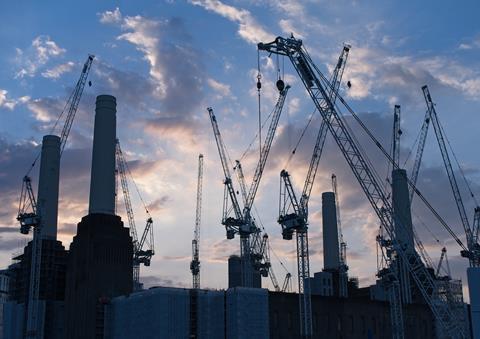Commercial and private housing the worst affected sectors
Construction output is expected to fall by 20% this year, the Construction Products Association has warned.
The CPA said despite activity on site returning more quickly than expected following the lockdown, output is still expected to fall by 20.6%.

In its summer forecast, it said the worst affected sectors include private housing, where a 33% drop is expected, and the commercial sector, which is expected to see a 29% fall.
The report said the return to construction sites from mid-May was largely to finish existing projects and complete refurbishments that could not take place during the restrictions.
It said uncertainty remains around longer-term demand and future new orders given the state of the wider economy.
Noble Francis, the CPA’s economics director, said: “There still remains a significant number of long-term uncertainties for the UK economy though, including: unemployment rates as furlough comes to an end, the uptake of homeworking, the potential of a second wave of infection, and the end of the Brexit implementation period in December.
“While next year we anticipate construction output rising 18% overall, it is worth noting that this is compared with a low base of activity in 2020 and will still be 6.4% lower than pre-coronavirus levels.”
Francis said the delivery of major infrastructure projects will be crucial to growth in 2021, with activity on site less affected by social distancing and major projects like HS2 driving significant growth for the sector.”
For housing projects, completions have been prioritised since the easing of lockdown due to the first phase of construction for Help to Buy requiring completion by 31 December – now extended until the end of next February – and a stamp duty holiday announced by the government.
The CPA said long-term confidence for new developments seemed fragile with the prospect for rising unemployment and signs that lender appetite is worsening.



























No comments yet